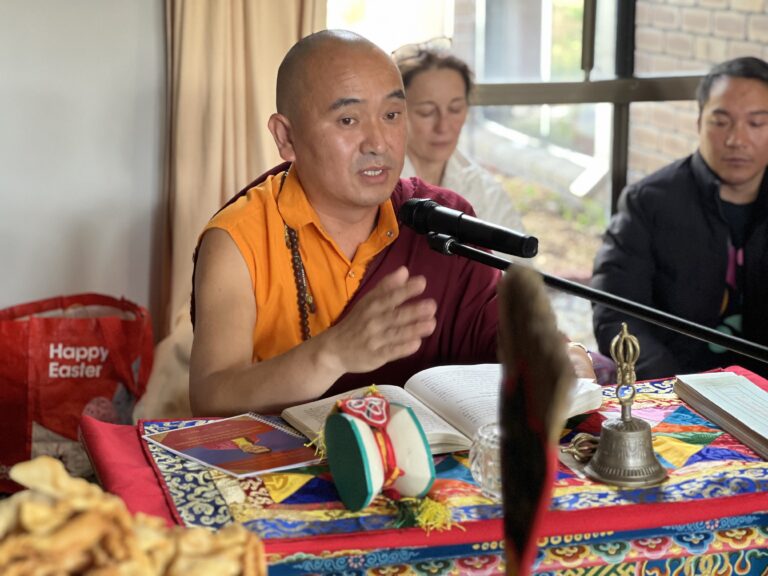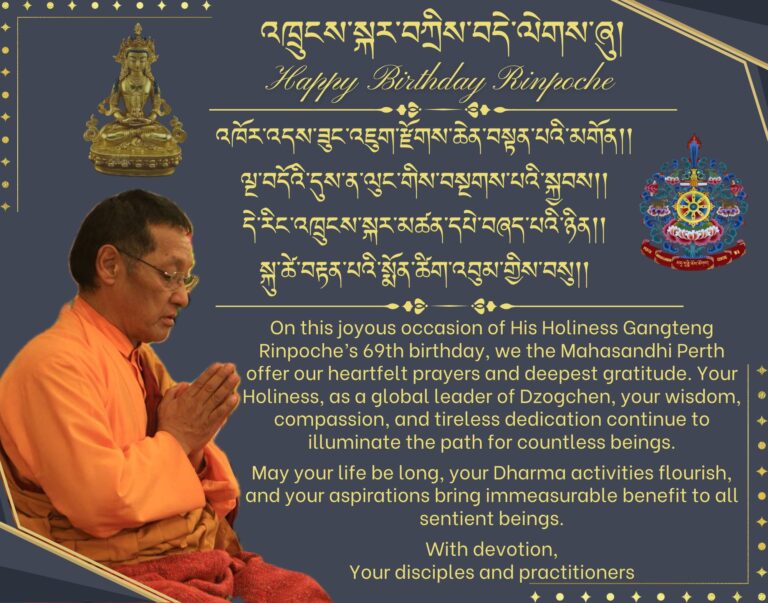
The Special Deity of Vajrayana Buddhism
Contributed by: Ven. Lama Chhimi Kinley
- Introduction
In the tapestry of Vajrayana Buddhism, amidst a myriad of deities and Bodhisattvas,
stands Kurukulle, the captivating Red Tara. Shrouded in symbolism and imbued with
mystical allure, Kurukulle embodies the essence of love, passion and magnetism.
Origin and Evolution
Kurukulle’s origin can be traced back to ancient Indian Tantric literature, where she is
depicted as a powerful emanation of Tara, the mother goddess of Compassion. In
Vajrayana Buddhism, she is revered as a prominent deity within the red Tara cycle of
teachings. Legend has it that Kurukulle emerged from the heart of Amitabha Buddha
embodying the essence of enlightened activity and love.
- Symbolism and Iconography
Central to Kurukulle’s symbolism is her vibrant red complexion, symbolizing passion,
love and the irresistible force of attraction. Adorned with ornaments and seated upon a lotus throne, she exudes an aura of radiant beauty and grace. In her hands, she holds symbolic objects such as a bow and arrow, representing her ability to magnetize and unite beings, and a lotus flower symbolizing purity and enlightenment.
- Role and Function
As a deity of magnetism and attraction, Kurukulle plays a pivotal role in Vajrayana
Buddhist practice. Devotees invoke her blessings to enhance their charisma, attract
positive relationships, and overcome obstacles on the path to enlightenment. She is also revered as a protector against malevolent forces and negativities, offering solace and guidance to those in need.
- Rituals and Practices
The veneration of Kurukulle is often accompanied by elaborate rituals and practices
designed to invoke her transformative energies. Devotees engage in mantra recitation,
meditation, visualisation, and offerings of flowers, incense, and other auspicious
symbols. The recitation of Kurukulle mantra, “Om Kurukulle Hri Svaha”, is believed to
channel her blessings and facilitate inner transformation.
- Spiritual Significance
Beyond her role as a deity of love and attraction, Kurukulle holds deeper spiritual
significance within Vajrayana Buddhist tradition. Her teachings emphasize the
cultivation of inner beauty, compassion and wisdom, guiding practitioners towards self-
realization and enlightenment. By aligning with Kurukulle’s qualities, devotees seek to
transcend egoic limitations and embody the divine essence of love and compassion.
- Contemporary Relevance
In an age marked by uncertainty and strife, Kurukulle’s teachings offer solace and
inspiration to seekers of all backgrounds. Many turn to her guidance in navigating the
complexities of modern life, seeking to cultivate love, beauty, and harmony in their
personal and spiritual journeys. As humanity grapples with issues of division and
discord, Kurukulle’s message of love and unity resonates more profoundly than ever
before.
- Conclusion
In the ethereal realm of Vajrayana Buddhism, Kurukulle stands as a beacon of love,
beauty and transformation. Through her vibrant imagery and profound teachings, she
continues to captivate the hearts and minds of devotees around the world, offering
guidance and inspiration on the paths to enlightenment. As we journey through the
tapestry of existence, may we be blessed by Kurukulle’s grace and find solace in her
eternal embrace.






